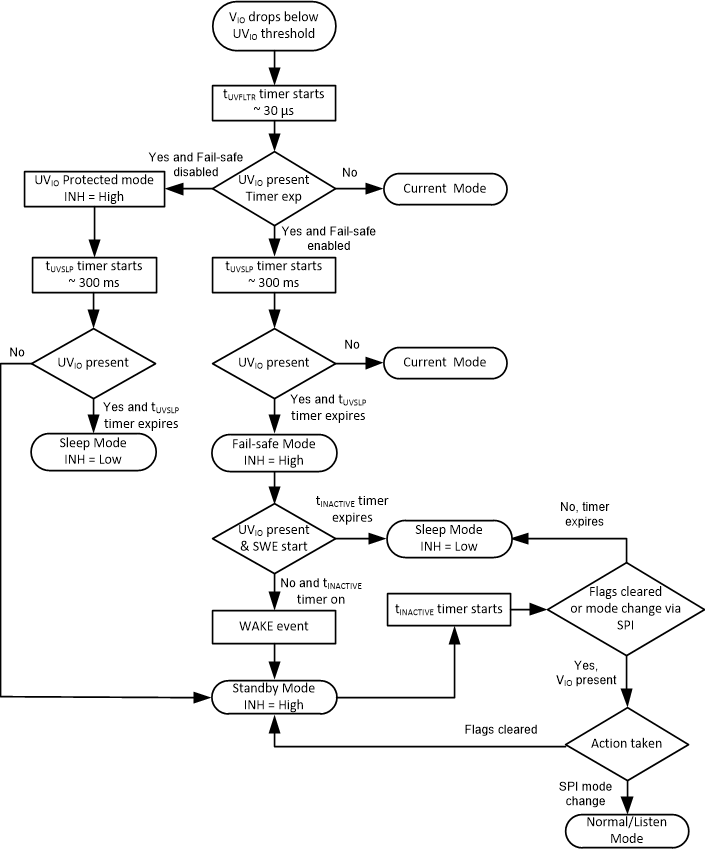SLLA475 December 2020 TCAN1144-Q1 , TCAN1146-Q1
- 1TCAN1144-Q1 and TCAN1146-Q1 Functional Safety Manual
- 2Trademarks
- 3Introduction
- 4TCAN114x-Q1 Hardware Component Functional Safety Capability
- 5Development Process for Management of Systematic Faults
- 6TCAN1144-Q1 and TCAN1146-Q1 Component Overview
- 7Description of Hardware Component Parts
- 8TCAN1144-Q1 and TCAN1146-Q1 Management of Random Faults
8.3.2.3 SM-7: VIO supply undervoltage; UVIO
If VIO drops below UVIO under
voltage detection several functions are disabled. The transceiver switches off and
disengages from the bus until VIO has recovered. When UVIO triggers, the
tUV timer starts. If the timer times out and the UVIO is still
there, the device enters sleep mode. Once in sleep mode, a wake event is required to
place the TCAN114x-Q1 into standby mode and enable the INH pin. As registers are cleared
in sleep mode, the UVIO interrupt flag is lost. If the UVIO event
is still in place, the cycle repeats. If during a thermal shut down event a
UVIO event happens, the device automatically enters sleep mode.  Figure 8-2 UVIO State
Diagram.
Figure 8-2 UVIO State
Diagram.
 Figure 8-2 UVIO State
Diagram.
Figure 8-2 UVIO State
Diagram.